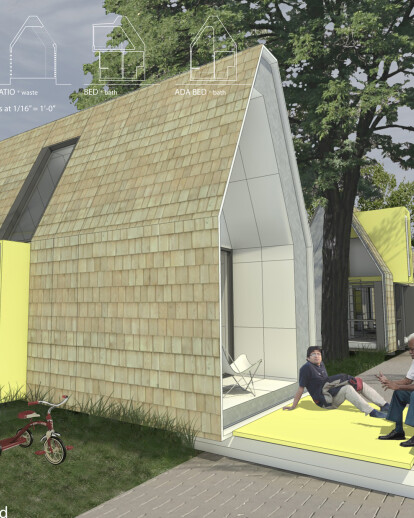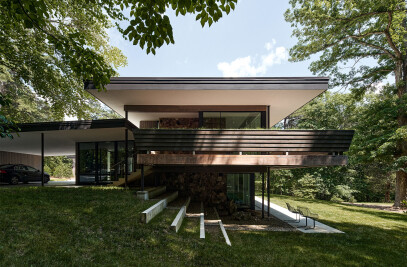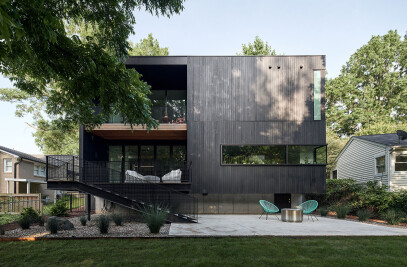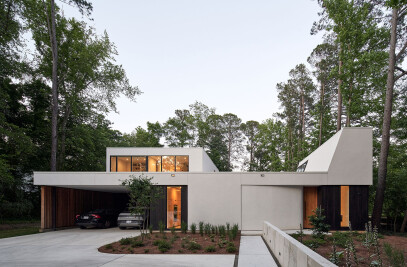In 2008, the world’s population became predominantly urban. In the US, rather than gravitating to urban centers along the West Coast, in the Northeast, and across the upper Midwest, new urban populations landed in emerging urban centers. The fastest growing US cities between 2000 and 2010 were Charlotte, Raleigh, Cape Coral, Provo, Austin, Las Vegas, McAllen, Knoxville, Greenville, and San Antonio.
These cities have young, educated populations, mild weather, entrepreneurial economies, and concentrations of technical creativity. These cities also generally lack substantial mass transit infrastructure, do not readily accommodate non-traditional populations, and are land-locked by single-family housing grids. Establishing new zoning that can accommodate denser populations and support smaller household formats in these cities is likely a more relevant effort than anything related to New York, Chicago, or San Francisco.
Raleigh, North Carolina (NC), metro population 884,891, grew by 63.4% between 2000 and 2010. As the capital city of NC, the hub of the Triangle region, and home to three major research universities, Raleigh is poised to maintain a steep climb towards urban significance. The average age in Raleigh is 32 years - students who come to the region to study and stay are major contributors to the steady population boom. Raleigh also has a large professional transient population - people who arrive pursuing opportunities in the booming local economy. And, Raleigh has a large aging population and a growing population of other low- or fixed-income people. The non-nuclear family population in Raleigh is growing.
Over the past decade, people have again begun living in the downtown core. Numerous mid- and high-rise housing projects have sprouted within walking distance of the city center. The single-family neighborhoods surrounding the city center have also experienced a renaissance. These two trends bracket the bounds of living conditions by providing high-cost urban dwelling in the former case and expensive large-lot single-family housing in the latter. Yet, nowhere in downtown has there emerged an affordable, flexible housing type for the creative entrepreneur, the intern who bikes to work, the retired teacher who rides the bus, the laid-off, middle-aged manager, the disabled veteran relying on social infrastructure, the single mom of one who needs to get back on her feet after a divorce. To be viable, Raleigh’s urban core must accommodate these populations.
The City of Raleigh has spent the last three years preparing a new Unified Development Ordinance (UDO). One major component of the new UDO is a reduction in required lot sizes for zoning designations. For example, a lot currently zoned R-10 is required to have a minimum lot size of 5,000 SF. Under the new UDO, the R-10 lot size requirement will be 4,000 SF. The UDO will also allow accessory dwellings on lots in the R-1, R-2, R4, R6, and R-10 zoning designations. In addition, former zones R-15 and R-20 will become residential mixed-use, or RX. These reclassifications, affecting 100% of residential lots in the downtown area, bring the potential for greater density and greater diversity in housing formats and demographics across the city.
Assessing each existing residential parcel in the city, it is apparent that most downtown parcels are larger than the current zoning requirements and will be even larger proportionally once the new UDO is ratified. The same lot-by-lot assessment reveals another pattern: some blocks downtown have alleys running through their centers, and most have a continuous seam of rear lot lines bisecting the block that could easily support an alley. Once vital to the support and infrastructure of the neighborhoods, Raleigh’s alleys are now comparatively barren. We see the potential for a new zone designed to exploit the full potential density of the downtown grid by allowing alleyway dwelling.
Our proposal is to establish a new zone within the UDO - alley residential, or RA-50. This new zone would be allowed in any block that is bisected by an existing or potential alleyway and where lots backing up to the alleyways have a surplus of land to shave away and form new, smaller lots that could front the alleyway. At a minimum of only 800 SF, the new alleyway parcels would be able to accommodate small dwellings and gardens for one or two people that would be integral to a new network of pedestrian alleyways that would complement the existing street grid in downtown.
These new parcels would yield a multiple bottom line. Current landowners could generate income off their excess land by either selling an RA-50 parcel or building a dwelling on one leasing it. Many lots are large enough to yield two or three such parcels. The new parcels would provide a new affordable housing option in close proximity to the university, public infrastructure, transportation hubs, and popular social venues. The city would benefit from new utility service units evenly dispersed within an existing downtown infrastructure, generating new income with minimal investment in new infrastructure. Finally, the environmental benefits of a more generous pedestrian environment, a more diverse and dense population, and a more concentrated population reliant on alternative transportation systems would positively alter the social landscape of downtown Raleigh.
The RA-50 zone demands a new house type that is modular, flexible, and equal in cost to a car. At roughly $30,000.00, and combined with a $3,000.00 RA-50 parcel, the cost of a new RA-50 property equates to a roughly $200.00/month mortgage. This monthly commitment drastically undercuts even the most affordable living options currently available in the city and opens housing opportunities to many.
The unit is a kit of parts. Five component segments - porch, stoop, den, patio, and bed, each containing an important support function - can be combined in nearly unlimited formats. The roughly 100 SF segments can easily compose dwellings ranging in size from 300 to 800 SF and costing $20,000.00 to $50,000.00. Plug-ins for seating, dining, and energy collection allow residents to further customize their homes.
The new owner of an RA-50 lot sites their home by casting curb foundations to support the segments they have selected. Segments arrive on a boom truck, along with the necessary materials to clad segments once assembled. The truck does the heavy lifting, and the remainder of the work is easily accomplished by a few individuals. The alleys are pedestrian environments, with the only traffic being a periodic boom truck announcing the arrival of a new neighbor.
RA-50 houses vary in their relationship to the alley. Sometimes long-side to the alley and sometimes gable to alley, varying in size, clad at the whim of the owner, and scattered as lots allow, the RA-50 settlement pattern is a rich, patchwork pedestrian grid creating an offset plaid to the downtown grid.
As smaller suburban cities urbanize across the United States, increasing density in predominantly single-family home lot structures will become a pressing issue. Many of the most rapidly growing, second-tier cities in the US, including Raleigh, NC, have a surplus of land per lot in their downtown areas and, in many cases, have existing or easily-established alleys throughout downtown neighborhoods. The RA-50 zoning model takes advantage of these traits common to the new breed of American city and presents a multiple bottom line to the benefit of current land owners, currently unhoused populations, the cities themselves, and the health of the cities’ social environments.

































